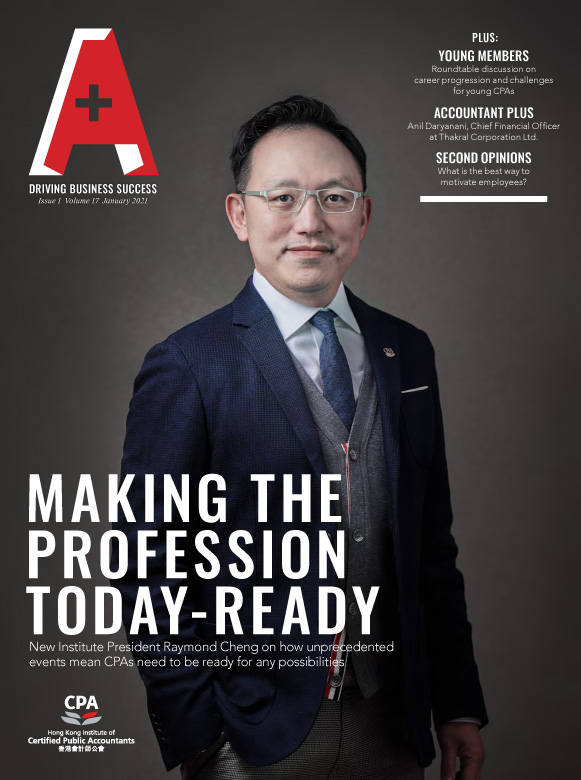Auditors may sometimes be engaged to perform audits on the financial statements of owners’ corporations in Hong Kong. The corporations’ daily operations and regulatory environment are different from commercial entities, so heightened attention should be given to certain areas during the financial statement audit. Members should also be mindful that Hong Kong Standards on Auditing (HKSAs) still apply to the conduct of their audits of owners’ corporations.
Below are some common scenarios encountered by respondents in complaint cases handled by the Hong Kong Institute of CPAs’ Compliance department that may deserve auditors’ attention.
Sufficient planning of the audit
Disputes arising between former and current management committees of owners’ corporations are not uncommon. Sometimes they can lead to complaints against unsuspecting auditors. The disputes usually relate to alleged improper use of owners’ funds, incomplete books and records, delays in depositing management fees into bank accounts, etc. Auditors should be alert to these factors as they may affect audit risk assessments and audit planning necessary to ensure audit quality.
In one case, management committee minutes reflected serious disputes between the former and current management committees alleging that the books and records kept by the former committee were materially incomplete and management fee deposits into the bank account were delayed. The auditor did not perform a sufficient review of the minutes when he planned the audit. Had he done so, he would have been able to identify the heightened audit risks in relation to the corporation’s books and records and receipts of management fees. Then, appropriate audit procedures could have been designed and performed to respond to the audit risks assessed.
When planning and performing an audit, an auditor is encouraged to have a sufficient understanding of minutes of the management committee and general meetings of owners, and other correspondence. Any significant discussions, communications and disputes relating to daily operations, record keeping and decisions made should have been recorded in these documents. The recorded information is vital for the auditor to assess audit risks, formulate an audit strategy and design sufficient, appropriate responses to address the risks assessed.
Obtaining sufficient appropriate audit evidence
One audit deficiency commonly found is auditors’ lack of appropriate audit evidence. In one case, payment of consultant’s fees were subject to approval by the management committee following a resolution passed by owners at an annual general meeting (AGM). However, the consultant fees were paid without any approval of the management committee. Since the auditor was unaware of the resolution, he did not verify if the requisite approval had been obtained for the payment of the consultant’s fees. Accordingly, the auditor was found to have failed to obtain sufficient appropriate audit evidence in understanding the corporation’s operation environment and the risks of material misstatements.
Another case involved material changes of certain comparative figures in the financial statements of an owners’ corporation. Among those figures, the comparative figure of owners’ reserves disclosed in the financial statements was almost twice the amount of the prior year figure. The auditor failed to perform audit procedures to obtain sufficient appropriate audit evidence to satisfy that the adjustments to the opening figures did not contain material misstatements. The expected audit procedures in this case would have included (i) understanding the nature of the adjustments; and (ii) reviewing the source documents to verify the existence of the transactions giving rise to the adjustments and accuracy of the relevant balances. The auditor was unable to show that he had access to the complete records of the owners’ corporation and had obtained sufficient appropriate audit evidence to support the changes.
Another deficiency in the above case pertains to test work on the amount receivable from the estate’s property management company. The auditor did not receive a response to the audit confirmation request. Notwithstanding, the auditor issued his unmodified opinion on the corporation’s financial statements. In this circumstance, the auditor should have performed alternative procedures.
As articulated in the disciplinary order of the above case, it is the duty of the auditor to obtain the relevant and necessary information and to be satisfied that there are no material misstatements before formulating his professional audit opinion, otherwise, he shall qualify his opinion to reflect the inadequacy.
In order to avoid the above audit deficiencies, auditors should be mindful to obtain sufficient appropriate audit evidence to support their opinion expressed.
Preparing sufficient audit documentation
Another common issue identified in the audits of owner’ corporations is lack of sufficient audit documentation. One case revealed that the owners’ corporation was required to pay a contractor for renovation work completed in stages. Due to delays in the renovation, the owners’ corporation would be entitled to a material amount of compensation. However, the financial statements did not disclose any compensation receivable. The auditor claimed that they had enquired about the compensation but not recorded their enquiry in the audit working papers. As the auditor, he should document the enquiry made and the evidence obtained on evaluating the likelihood and extent of recovering the compensation. Documentation should allow a knowledgeable third party to understand the amount and type of work that was undertaken to enable the auditor to conclude on the entity’s financial statements.
In another case, the auditor failed to document matters relating to the audit of the major account balances. Without documentation of the audit procedures and conclusions related to those important accounts, the auditor was unable to adequately support the unmodified audit opinion that had been issued.
Sufficient understanding of the scope of the engagement
Sometimes, auditors may be engaged to perform non-statutory audits. Auditors’ lack of a proper identification of the characteristics of an engagement and definition of the audit scope may result in failure to detect items which warrant further consideration. In one case, the auditor was engaged to audit the accounts of a renovation project of the external wall of a residential estate. The project took a period of 15 months, during which time various funds were transferred and expenses were incurred. The auditor issued an unmodified opinion but the project’s accounts included a number of material receipts and expenses unrelated to the renovation project. Without a properly defined audit scope, the auditor would not be able to establish an overall audit strategy and design audit procedures effectively. Consequently, the auditor was unable to address the risks of material misstatements in the financial statements.
Proper communication helps
Individual owners are understandably concerned about whether the money they contribute to the owners’ corporation are being properly managed. They may not fully understand the audited financial statements and auditor’s responsibilities, unless they have a business background. These misunderstandings seem to have contributed to an increase in the number of complaints the Institute has handled over the past few years.
While auditors are responsible to the owners in a collective manner, members may still receive enquiries from individual owners. Auditors may consider reminding the enquirers that the management committee has the primary duty to prepare the books and records and financial statements under the Building Management Ordinance (Cap. 344). They may direct the enquirers to contact the management committee.
Conclusions
When performing an audit on the financial statements of owners’ corporations, auditors should always be mindful of the corporation’s nature of daily operations and the regulatory environment under which it operates. Proper understanding of the engagement characteristics and clarity of the audit scope improve risk assessment and audit planning. Auditors are also reminded to obtain sufficient appropriate audit evidence and prepare adequate audit documentation.
The article was contributed by the Institute’s Compliance department
















